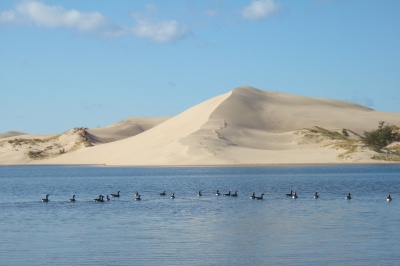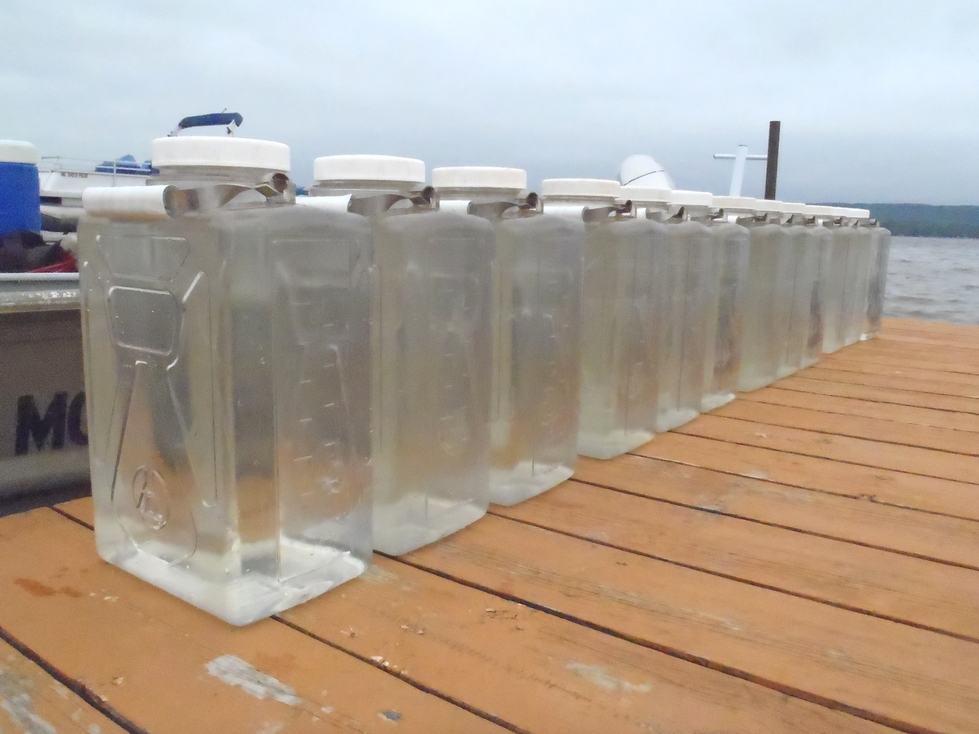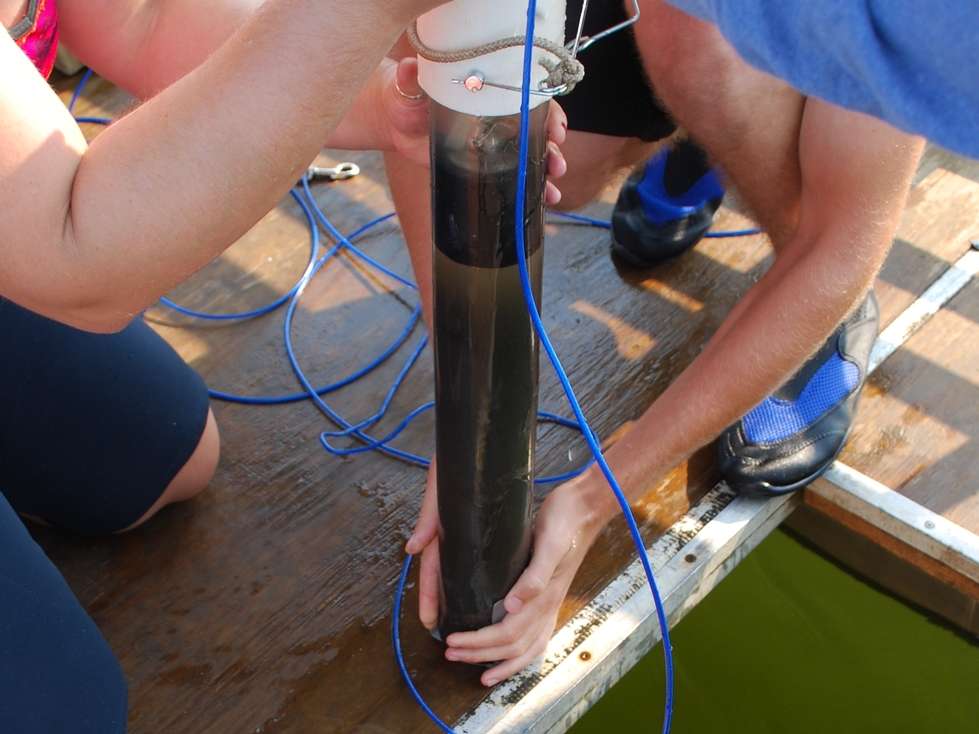Water Quality and Hydrology of Silver Lake, Oceana County, MI with Special Emphasis on Response of the Lake to Nutrient Loading

Silver Lake in Oceana County, MI is a 690 acre lake with a maximum historical recorded depth of 22 feet. The lake shoreline is mostly developed, with about one third of the remaining shoreline associated with the Michigan State Park system. A dune formation creates the northwest border of the lake and separates Silver Lake from Lake Michigan. The summer months draw visitors to the lake and sand dune areas for outdoor recreation. As a result, the water resources of Silver Lake are a valued asset to the surrounding community. Therefore, it is important to understand the water quality and hydrology of the area to prevent potential harm to Silver Lake.
With our partners at the U.S. Geological Survey (USGS), our overall study objectives are to characterize the hydrologic inputs and outputs for Silver Lake to develop a water budget, and characterize potential nutrient sources for Silver Lake to develop a nutrient budget.
The Steinman Lab is specifically researching factors that contribute to algal blooms in Silver Lake using two approaches:

- Nutrient Bioassays. Although phosphorus is the most common nutrient limiting algal growth in freshwaters, in some cases, nitrogen can become limiting. It is unclear which nutrient, or both, is controlling algal bloom formation in Silver Lake. It is critical to make this determination because the primary sources of nitrogen and phosphorus often differ, so targeting the appropriate best management practices will vary depending on the nutrient and its source. We will conduct nutrient addition bioassays to identify the nutrient controlling algal blooms in Silver Lake, as well as examine cyanotoxin production in collaboration with the Rediske Lab at AWRI.

- Internal Phosphorus Loading Estimation. Under oxygenated (oxic) conditions, phosphorus in sediment in west Michigan lakes is usually bound to iron. However, when lakes stratify in summer, the bottom waters (hypolimnion) often become depleted in dissolved oxygen (become anoxic). When this happens, the iron becomes chemically reduced and releases the phosphorus to which it was attached. That phosphorus can then stimulate algal growth which may lead to algal blooms. The limited data available in Silver Lake suggest that the bottom waters do not become anoxic, in which case internal loading of phosphorus should not be an issue. We will measure diel dissolved oxygen concentrations to determine if Silver Lake experiences low dissolved oxygen at night. In addition, we will collect sediment cores for measuring phosphorus release under oxic and anoxic conditions in the lab.
Our project partners at USGS will be conducting a comprehensive study of groundwater influence, water chemistry, and hydrology. These data, along with the results of AWRI's studies, will be used to construct a water budget, nutrient budget, groundwater model, and eutrophication model for Silver Lake. The information can be used by local water managers and stakeholders to implement management practices that best protect Silver Lake from potential negative effects associated with elevated nutrient concentrations. This assessment will also provide information on local and regional hydrology of the Silver Lake watershed in Michigan.
For more information, including real-time data, visit the USGS Silver Lake project website: https://pubs.er.usgs.gov/publication/sir20155158
Publications
Brennan, A.K., Hoard, C.J., Duris, J.W., Ogdahl, M.E., and Steinman, A.D., 2015, Water quality and hydrology of Silver Lake, Oceana County, Michigan, with Emphasis on lake response to nutrient loading, 2012–14. U.S. Geological Survey Scientific Investigations Report 2015–5158, 75 p., https://dx.doi.org/10.3133/sir20155158.
This project is funded by the Silver Lake Improvement Board.
Partner:
U.S. Geological Survey
Contacts:
Dr. Al Steinman, Project Manager: [email protected]
Mary Ogdahl, Lead Technician: [email protected]

